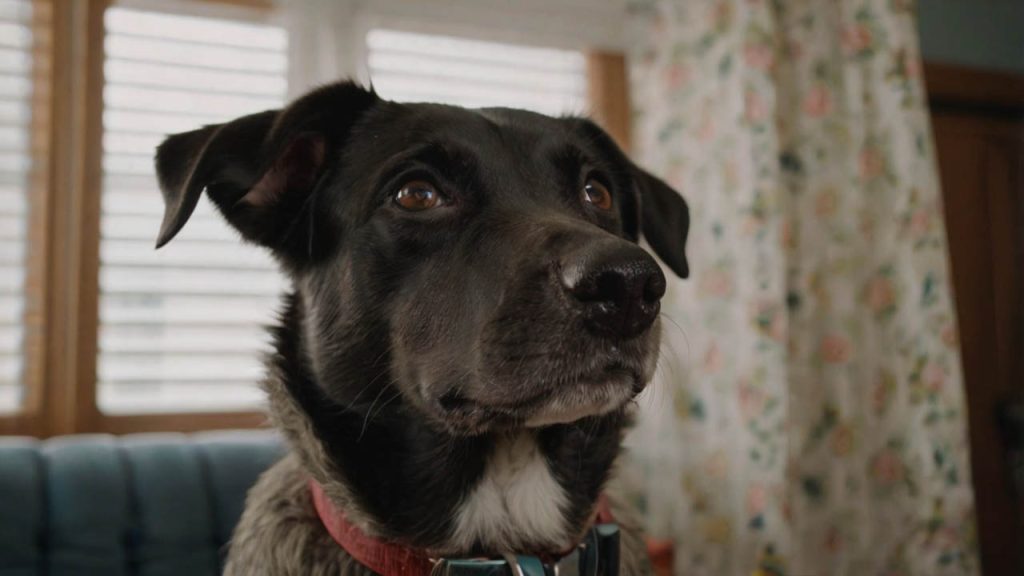Introduction: Understanding Your Dog’s Emotional Struggle
Does your dog transform into a whirlwind of destruction the moment you grab your keys? If you’re dealing with separation anxiety in dogs, you’re witnessing one of the most heartbreaking and challenging behavioral conditions affecting our canine companions. According to the Journal of Veterinary Behavior, studies indicate that between 20-40% of dogs presented to veterinary behaviorists suffer from separation anxiety, making it the second most common behavioral problem after aggression. Furthermore, recent research suggests that pandemic-era adoptions have increased these numbers, with some estimates showing up to 50% of dogs now experiencing some degree of separation-related distress.
Here’s what makes separation anxiety in dogs particularly devastating—it’s not just about a few chewed shoes or scratched doors. Dogs experiencing this condition endure genuine panic and emotional suffering every time their owners leave, similar to a human having a panic attack. Their destructive behaviors, excessive barking, and house soiling aren’t acts of revenge or spite; they’re desperate attempts to cope with overwhelming fear and distress.
Throughout this comprehensive guide, I’ll share insights from working with hundreds of anxious dogs over the past decade, including breakthrough techniques that have transformed even the most severe cases. You’ll discover how to recognize the signs, understand the underlying causes, and implement proven strategies to help your dog overcome separation anxiety in dogs. Most importantly, you’ll learn that with patience, consistency, and the right approach, most dogs can learn to feel secure and calm when left alone.
What Is Separation Anxiety in Dogs?
Clinical Definition and Symptoms
Separation anxiety in dogs represents a complex behavioral disorder characterized by extreme distress and problematic behaviors that occur exclusively when dogs are left alone or separated from their primary attachment figures. Unlike simple boredom or occasional mischief, this condition involves genuine panic responses triggered by isolation. Veterinary behaviorists classify it as an anxiety disorder requiring systematic intervention rather than simple training corrections.
The most common symptoms manifest within minutes of the owner’s departure. Destructive behavior typically targets exit points—doors, windows, and gates—as dogs desperately attempt to reunite with their owners. Excessive vocalization including barking, howling, and whining often continues for hours, leading to neighbor complaints and potential legal issues. Additionally, many dogs experience loss of bladder or bowel control despite being fully housetrained when owners are present.
Physical symptoms of separation anxiety in dogs include excessive drooling, panting, pacing, and self-injury from escape attempts. Some dogs develop repetitive behaviors like spinning or excessive grooming that can result in hot spots or lick granulomas. I’ve witnessed dogs who’ve broken teeth trying to chew through crates, torn nails scratching at doors, and even jumped through closed windows in their panic to escape.

Distinguishing True Anxiety from Other Issues
Not every problematic behavior during owner absence indicates separation anxiety in dogs. Accurate diagnosis requires distinguishing between true anxiety and other issues like insufficient exercise, boredom, incomplete housetraining, or territorial behaviors. True separation anxiety occurs only during isolation, while other problems might manifest regardless of owner presence.
Boredom-related destruction tends to be more generalized and playful—shredded pillows, unrolled toilet paper, or ransacked garbage cans. These dogs often appear relaxed when owners return, sometimes proudly displaying their “achievements.” Conversely, dogs with separation anxiety show signs of ongoing stress including trembling, excessive greeting behaviors, and shadowing owners closely after reunions.
Video monitoring provides invaluable diagnostic information. Dogs with separation anxiety in dogs typically begin showing distress immediately after departure, with behaviors escalating rapidly. Their destruction appears frantic and focused on escape routes rather than entertainment. Furthermore, these dogs rarely eat, play with toys, or rest normally during absence, remaining in heightened alert states throughout isolation periods.
Why Separation Anxiety in Dogs Develops
Root Causes and Risk Factors
Understanding why separation anxiety in dogs develops helps predict susceptible individuals and implement preventive measures. Genetics play a significant role—certain breeds including German Shepherds, Labrador Retrievers, Vizslas, and Border Collies show higher predisposition. These breeds’ strong bonding tendencies and working heritage create deeper attachment needs that, when unmet, manifest as separation distress.
Early life experiences profoundly influence anxiety development. Puppies separated from mothers and littermates before eight weeks often struggle with independence later. Similarly, dogs from puppy mills, pet stores, or multiple rehoming situations show increased vulnerability. Research from Tufts University indicates that shelter dogs are twice as likely to develop separation anxiety compared to dogs raised in stable homes from puppyhood.
Traumatic experiences can trigger sudden onset of separation anxiety in dogs even in previously confident animals. Events like break-ins during owner absence, severe storms while alone, or medical emergencies create lasting associations between isolation and danger. Additionally, major life changes—moving homes, family member loss, or schedule shifts—destabilize dogs’ sense of security, potentially triggering anxiety responses.
Environmental and Social Triggers
Modern lifestyle factors significantly contribute to separation anxiety in dogs prevalence. The shift to remote work during COVID-19 created constant companionship that many dogs now expect as normal. The sudden return to office work has triggered widespread separation anxiety in dogs who never learned independence. This “pandemic puppy” phenomenon affects millions of households worldwide.
Over-attachment patterns between owners and dogs exacerbate separation issues. Well-meaning owners who never leave puppies alone, allow constant following, or provide excessive attention inadvertently prevent healthy independence development. These dogs never learn that being alone is safe and normal, making eventual separations traumatic.
Social dynamics within multi-pet households also influence separation anxiety in dogs. Loss of a companion animal often triggers separation anxiety in surviving pets who relied on that social buffer. Conversely, adding new pets without proper integration can increase anxiety through resource competition and disrupted routines. Understanding these complex social factors helps create comprehensive treatment approaches.
Proven Treatment Methods for Separation Anxiety in Dogs
Systematic Desensitization Protocols
The gold standard for treating separation anxiety in dogs involves systematic desensitization—gradually exposing dogs to increasingly longer alone periods while maintaining sub-threshold anxiety levels. This process rewires emotional responses, teaching dogs that isolation isn’t dangerous. Success requires starting with separations so brief that dogs don’t experience anxiety, often just seconds initially.
Begin by identifying your dog’s threshold—the duration they can tolerate alone without showing stress signs. For severe cases, this might mean simply stepping outside the door and immediately returning. Practice these micro-absences throughout the day, gradually increasing duration by 5-10 seconds only when dogs remain calm. This slow progression prevents rehearsing anxious behaviors that reinforce the problem.
Counterconditioning pairs alone time with positive experiences, changing emotional associations with isolation. Create “departure routines” involving special treats or toys that only appear during practice sessions. Kong toys stuffed with frozen peanut butter, puzzle feeders, or lick mats provide engaging activities that compete with anxiety. Eventually, dogs begin anticipating departures positively rather than fearfully.
Medication and Supplement Options
Severe separation anxiety in dogs often requires pharmaceutical intervention alongside behavioral modification. Anti-anxiety medications like fluoxetine, clomipramine, or trazodone reduce overall anxiety levels, making behavioral training more effective. These medications aren’t sedatives—they address underlying neurochemical imbalances contributing to anxiety disorders.
The American Veterinary Medical Association emphasizes that medication should complement, not replace, behavior modification. Drugs provide a window of reduced anxiety during which dogs can learn new coping skills. Most dogs require 4-8 weeks for medications to reach therapeutic levels, with treatment duration varying from months to lifelong depending on severity.
Natural supplements offer alternatives for mild cases or adjunct therapy. L-theanine, derived from green tea, promotes relaxation without sedation. Adaptogenic herbs like ashwagandha help regulate stress responses. CBD products show promise for anxiety management, though research remains ongoing. Always consult veterinarians before starting any supplement regimen to ensure safety and appropriate dosing.
Training Techniques to Overcome Separation Anxiety in Dogs
Independence Building Exercises
Teaching independence prevents and treats separation anxiety in dogs by building confidence in solitude. Start with “stationing” exercises where dogs learn to relax on designated mats while you move around the room. Reward calm settling with treats and praise, gradually increasing distance and duration. This creates a portable safe space dogs can access anywhere.
Implement “graduated departures” throughout daily routines. Practice putting on shoes, grabbing keys, or approaching doors without actually leaving. These actions lose their predictive power as departure cues, reducing anticipatory anxiety. Mix real departures with fake ones until dogs can’t predict whether you’re actually leaving.
Furthermore, create structured alone time even when you’re home. Use baby gates to separate dogs in adjoining rooms while you work or relax. This teaches that physical separation doesn’t mean abandonment. Provide engaging activities during these periods, making alone time productive rather than stressful. Dogs who learn to enjoy independent activities show better resilience against separation anxiety in dogs.
Environmental Management Strategies
Optimizing your dog’s environment significantly impacts separation anxiety in dogs management. Create a consistent safe space—whether a specific room, crate (if positive associations exist), or corner with their bed. This area should contain comforting items like worn clothing carrying your scent, which provides olfactory comfort during absence.
Noise management proves crucial for anxious dogs. White noise machines, calming music specifically composed for dogs, or TV programs mask outside triggers that might escalate anxiety. Studies from Colorado State University show classical music reduces stress behaviors in kenneled dogs by up to 70%. Position speakers near your dog’s safe space for maximum benefit.
Visual barriers prevent dogs from watching you leave or monitoring for your return—behaviors that maintain anxiety. Window films, closed curtains, or strategic furniture placement block sightlines that trigger vigilance. Some dogs benefit from covered crates creating den-like environments, though this must be introduced carefully to avoid confinement panic.
Common Mistakes in Treating Separation Anxiety in Dogs
Counterproductive Owner Behaviors
Well-intentioned owners often inadvertently worsen separation anxiety in dogs through emotional departures and returns. Lengthy goodbyes with excessive affection, apologetic tones, or anxious energy communicate that departures are significant events worthy of concern. Similarly, excited reunions reward anxious anticipation, reinforcing the departure-return cycle’s emotional intensity.
Punishment for anxiety-related behaviors represents another critical mistake. Scolding dogs for destruction, house soiling, or vocalization increases anxiety without addressing underlying causes. Dogs can’t connect delayed punishment with earlier behaviors, creating confusion and fear that exacerbates separation distress. Positive approaches consistently outperform punitive methods for treating anxiety disorders.
Moving too quickly through desensitization protocols sabotages progress. Owners eager for rapid improvement often push beyond their dog’s comfort threshold, triggering setbacks that can worsen separation anxiety in dogs. Each anxiety episode reinforces fearful associations, potentially undoing weeks of careful progress. Patience and consistency, though frustrating, yield better long-term outcomes.
Inadequate Environmental Preparation
Failing to properly prepare the environment undermines treatment efforts for separation anxiety in dogs. Leaving accessible items that could cause harm during panic episodes—electrical cords, toxic plants, or breakable objects—creates dangerous situations. Anxiety-driven dogs don’t make rational choices about what to chew or investigate during distress.
Inconsistent schedules confuse anxious dogs who rely on predictability for security. Erratic departure times, varying absence durations, or unpredictable returns prevent dogs from developing coping rhythms. While some variability prevents rigid anxiety patterns, extreme inconsistency increases overall stress levels.
Additionally, ignoring multi-pet dynamics affects treatment success. Other pets might inadvertently reinforce anxiety through their own stress responses or compete for resources, increasing tension. Some dogs actually calm each other, making solo training necessary for each individual. Understanding household dynamics ensures comprehensive treatment approaches.
Success Stories: Overcoming Separation Anxiety in Dogs
Case Study: From Panic to Peace
Max, a three-year-old rescue Labrador, exemplified severe separation anxiety in dogs when his owners contacted me. He had destroyed three crates, causing dental damage in escape attempts. Neighbors complained about eight-hour barking marathons, threatening eviction proceedings. His owners considered rehoming, believing his anxiety insurmountable.
We implemented a comprehensive protocol combining medication (fluoxetine), systematic desensitization, and environmental modifications. Starting with two-second departures, we gradually built to 30 minutes over three months. Max wore a Thundershirt for added comfort, and we installed cameras for remote monitoring and intervention. White noise and food puzzles provided distraction during practice sessions.
Six months later, Max comfortably tolerates four-hour absences without medication. His owners maintain management strategies including morning exercise, midday walker visits for longer absences, and continued environmental enrichment. This transformation demonstrates that even severe separation anxiety in dogs can improve with dedication and appropriate intervention.
The Power of Early Intervention
Luna, an eight-week-old Golden Retriever puppy, showed early signs of separation anxiety in dogs including excessive vocalization when crated and shadowing behaviors. Her proactive owners sought help immediately rather than hoping she’d “grow out of it.” This early intervention made treatment significantly easier and faster.
We established independence training from day one, using positive crate conditioning, scheduled alone time, and graduated absence exercises. Luna learned that isolation predicted special treats and toys, creating positive associations. Her owners practiced brief separations multiple times daily, building to age-appropriate durations without triggering distress.
Now two years old, Luna shows no signs of separation anxiety despite her early predisposition. She happily retreats to her crate with puzzle toys when owners leave, often napping through four-hour absences. This case illustrates how preventing separation anxiety in dogs through early training proves far easier than treating established anxiety.

Long-Term Management of Separation Anxiety in Dogs
Maintenance Strategies
Successfully treating separation anxiety in dogs requires ongoing management rather than expecting permanent “cure.” Most dogs need continued environmental support, scheduled alone time practice, and periodic training refreshers to maintain progress. Think of it like managing any chronic condition—ongoing attention prevents relapse.
Regular exercise remains crucial for anxiety management. Physical activity reduces overall stress, promotes better rest, and provides mental stimulation that competes with anxious thoughts. Morning exercise before departures proves particularly effective, creating calm, tired dogs more likely to rest during absence. Aim for breed-appropriate activity levels, adjusting for age and health status.
Social enrichment through doggy daycare, playdates, or dog walkers provides valuable variety in your absence management toolkit. These alternatives prevent dogs from experiencing long isolation periods that might trigger setbacks. Rotating between true alone time and supervised social time maintains independence while meeting social needs.
Monitoring Progress and Adjusting Approaches
Tracking improvement in separation anxiety in dogs requires systematic documentation. Keep logs noting departure duration, observed behaviors (via camera), and successful strategies. This data reveals patterns, identifies triggers, and demonstrates progress during frustrating plateaus. Celebrate small victories—five minutes of calm alone represents significant achievement for severely anxious dogs.
Regular reassessment ensures continued treatment appropriateness. As dogs improve, gradually reduce management intensity while monitoring for regression signs. Some dogs eventually discontinue medication, while others need lifelong support. Similarly, environmental modifications might become less critical as confidence builds, though maintaining some consistency provides security.
Prepare for potential setbacks during life changes. Moving homes, schedule changes, or family transitions can trigger temporary regression in separation anxiety in dogs. Anticipating these challenges and temporarily intensifying support prevents minor setbacks from becoming major relapses. Most dogs quickly return to baseline with consistent management through transitions.
Frequently Asked Questions
Q: How long does it take to cure separation anxiety in dogs?
A: Treatment duration varies significantly based on severity, consistency, and individual response. Mild cases might improve within 6-8 weeks, while severe separation anxiety in dogs often requires 6-12 months of dedicated work. Some dogs need ongoing management rather than complete “cure.”
Q: Can separation anxiety in dogs develop suddenly in older dogs?
A: Yes, senior dogs can develop separation anxiety due to cognitive decline, sensory loss, or medical issues causing discomfort when alone. Any sudden behavior change in older dogs warrants veterinary examination to rule out underlying health problems.
Q: Should I get another dog to help with separation anxiety?
A: Adding another pet rarely solves separation anxiety in dogs, as most cases involve attachment to human companions specifically. Some dogs actually become more stressed with pet competition. Address the existing dog’s anxiety before considering additional pets.
Q: Can crate training help separation anxiety in dogs?
A: Crates help some dogs feel secure but worsen anxiety in others who feel trapped. Never force crating for anxious dogs showing escape behaviors. If introducing crates, create positive associations through gradual conditioning with doors open initially.
Q: Are certain breeds more prone to separation anxiety in dogs?
A: Yes, working breeds, herding breeds, and companion breeds show higher predisposition to separation anxiety. However, any dog can develop this condition regardless of breed, and individual factors matter more than breed tendencies.
Conclusion: Hope and Healing for Your Anxious Dog
Managing separation anxiety in dogs represents one of the most challenging yet rewarding journeys in pet ownership. Throughout this guide, we’ve explored the complex nature of this condition, from its neurological underpinnings to practical treatment strategies that actually work. The key takeaway is that separation anxiety isn’t a behavioral choice or training failure—it’s a genuine anxiety disorder requiring compassionate, systematic intervention.
Remember that successful treatment of separation anxiety in dogs demands patience, consistency, and often professional support. Whether you’re implementing desensitization protocols, considering medication, or modifying your environment, every small step forward matters. The journey might feel overwhelming initially, but countless dogs have transformed from panicked escape artists to confident, independent companions with proper treatment.
Take action today by honestly assessing your dog’s anxiety level and beginning with just one strategy from this guide. Start with the briefest possible departures that don’t trigger anxiety, even if that means simply stepping outside for two seconds. Document your baseline, celebrate tiny victories, and don’t hesitate to seek professional help if needed. Your commitment to helping your dog overcome separation anxiety in dogs will strengthen your bond and dramatically improve both your lives. Contact a certified veterinary behaviorist or qualified trainer specializing in anxiety disorders to develop a customized treatment plan that addresses your dog’s specific needs and your lifestyle requirements.



 Solving Separation Anxiety in Dogs
Solving Separation Anxiety in Dogs